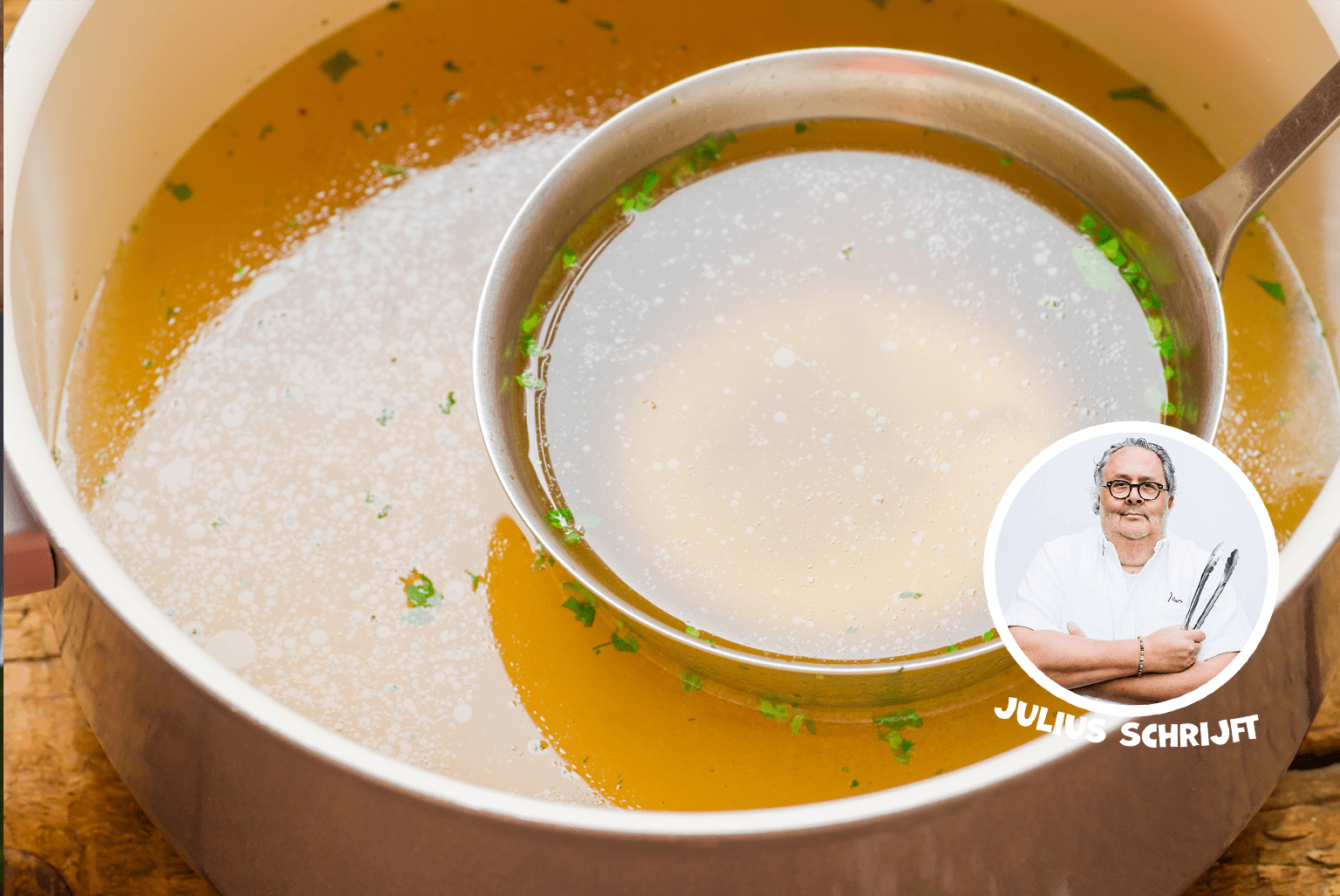Godfrey of Bouillon, born on September 18, 1060, was Duke of Lower Lorraine from 1089 to 1100, but even more importantly one of the leaders of the First Crusade. He was proclaimed the first king of Jerusalem but refused that title, preferring to call himself guardian or defender of the Holy Sepulchre. He was born 963 years ago, but that is not about that at all, we are going to talk about broth, and I am not talking about the kind of luxurious soup kitchens in Paris, the so-called Bouillons, nor about the “beautiful magazine to to enjoy”, Broth, from my friend Wil Janssen, who I think just stopped doing it after 20 years, no, we are talking about real stock, the spirit-rich liquid drawn from bones, carcasses, bones, peels, tubers and the like more they, which are used daily in the Gastrobar and Ron’s other restaurants.
When I walk into a professional kitchen, and I do that sometimes, and there is a large pot of stock brewing on a corner of the stove, I always know that it is going well. “Here people really cook, here there is respect for flavors.” The great thing about broth is that it actually doesn’t cost much at all other than a little energy. If you don’t have everything in the kitchen ready-made, clean and cut, you will have enough waste, which is not waste at all, to make different broths. Skins, butts, bones, obsolete parts, it’s a matter of pouring everything into large pans of water and a lot of patience. And respect, of course, for the things and for the steps. My inspiration, and Ron’s, Henk Tuin, once left a large pan in my kitchen that I came across again years later. It was his stock pot from Aujour’dhui in which he had steeped his stocks for years. The pilot light had burned a hole in the stainless steel, which he had patched up with a piece of new stainless steel. A pan with a plaster on the bottom, so to speak. That’s respect!
Stock is actually pretty much the basis of most kitchens. It is not only the ultimate seasoning for soups, but also for sauces, dressings, stews, vegetable dishes, you can’t do without it in the kitchen. Fresh is of course the tastiest, although there are reasonable brands available ready-made, the only thing you have to be careful with is the salt content, especially if you let it evaporate a bit.
You often hear chefs talk about a stock, which is also stock, or at least a reduced, therefore stronger, stock, which is actually what Ron uses most often to flavor sauces and the like. A glace is a strong boiled stock, often the bones and vegetables used in a glace are first roasted in the oven for some extra flavor, after which you can call it a gravy again after the first reduction, for example jus de veau, veal gravy. Glace is the end product, so to speak, and is 90% evaporated stock, which has become a kind of syrup and is an amazing seasoning.
If you have followed all the steps carefully (see https://www.juliusjaspers.nl/godfried-van-bouillon/) your broth will be clear and you can also call it consommé.
Outside the usual broth aisles, there are some specials that I would like to mention. What about clear tomato stock, the drained liquid from ripe ground tomatoes, or eel stock, from the bones and skins of smoked eel, or stock from sea snails, from Noma, or from wagyu, from François Geurds, or from sardines from Mugaritz. Magnus Nillsen filtered his stock through a piece of reindeer moss, and at the Clove Club in London they flavor it with Madeira from 1908
Broth, I can talk about it for hours, and I do that in my podcast about broth in Julius Pantry, which can be listened to via your favorite podcast app or Spotify. Make your own stock, go to my blog (see above), want to taste the applications of stock? I would say, drop by one of Ron’s restaurants.








